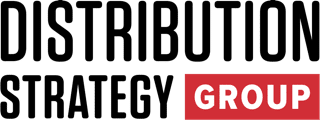The Institute for Supply Management (ISM) has released its Spring 2025 Supply Chain Planning Forecast, revealing a complex landscape for U.S. supply chains. While supply chain conditions are stabilizing, growth expectations have tempered, and cost pressures persist.
In the manufacturing sector, revenue growth for 2025 is projected at a modest 0.1%, a significant decline from the 4.2% increase forecasted in December 2024. Capital expenditures are expected to decrease by 1.3%, in contrast with the previous projection of a 5.2% increase. Operating rates stand at 79.2% of normal capacity, and employment is anticipated to decline by 0.1% by year-end. Prices paid for raw materials are projected to rise by 7.5%.
The services sector mirrors this cautious outlook. Revenue is expected to remain flat, a downgrade from the 3.9% increase forecasted in December 2024. Capital expenditures are projected to decrease by 3.3%, with operating rates at 86.5% of normal capacity. Employment is expected to decline by 1.6%, and prices paid for raw materials are expected to increase by 7.3%.
Analysts interpret these figures as indicative of a stabilizing supply chain environment, albeit with tempered growth expectations. Timothy Fiore, chair of the ISM Manufacturing Business Survey Committee, noted, “With eight manufacturing industries expecting revenue growth in 2025 and eight industries expecting employment growth in 2025, panelists forecast a flat rest of the year”.
The anticipated increases in raw material prices suggest persistent inflationary pressures that could impact profit margins. This scenario underscores the need for distributors to adapt strategically.
Implications for Distributors:
- Inventory Management: With steadier supply flows, distributors may experience reduced urgency in expediting inventory. However, the anticipated rise in raw material costs necessitates vigilant inventory management to mitigate potential margin erosion.
- Demand Forecasting: The flat revenue projections in both manufacturing and services sectors suggest that distributors should prepare for softer demand. Enhanced demand forecasting and customer engagement strategies will be crucial to navigate this environment.
- Operational Efficiency: The shift from supply availability to value-added services and pricing strategy underscores the need for distributors to optimize operations and offer differentiated services to maintain competitiveness.
- Capital Investment: The decrease in capital expenditures across sectors indicates a cautious approach to investment. Distributors may need to reassess their capital allocation strategies to align with the current economic outlook.
In summary, while supply chain conditions are stabilizing, distributors face a landscape of subdued growth and rising costs. Strategic planning, operational efficiency, and customer-centric approaches will be key to navigating the remainder of 2025.
Don’t miss any content from Distribution Strategy Group. Join our list.


